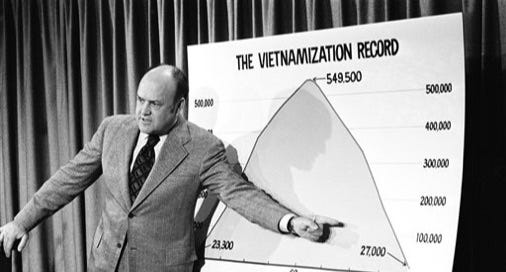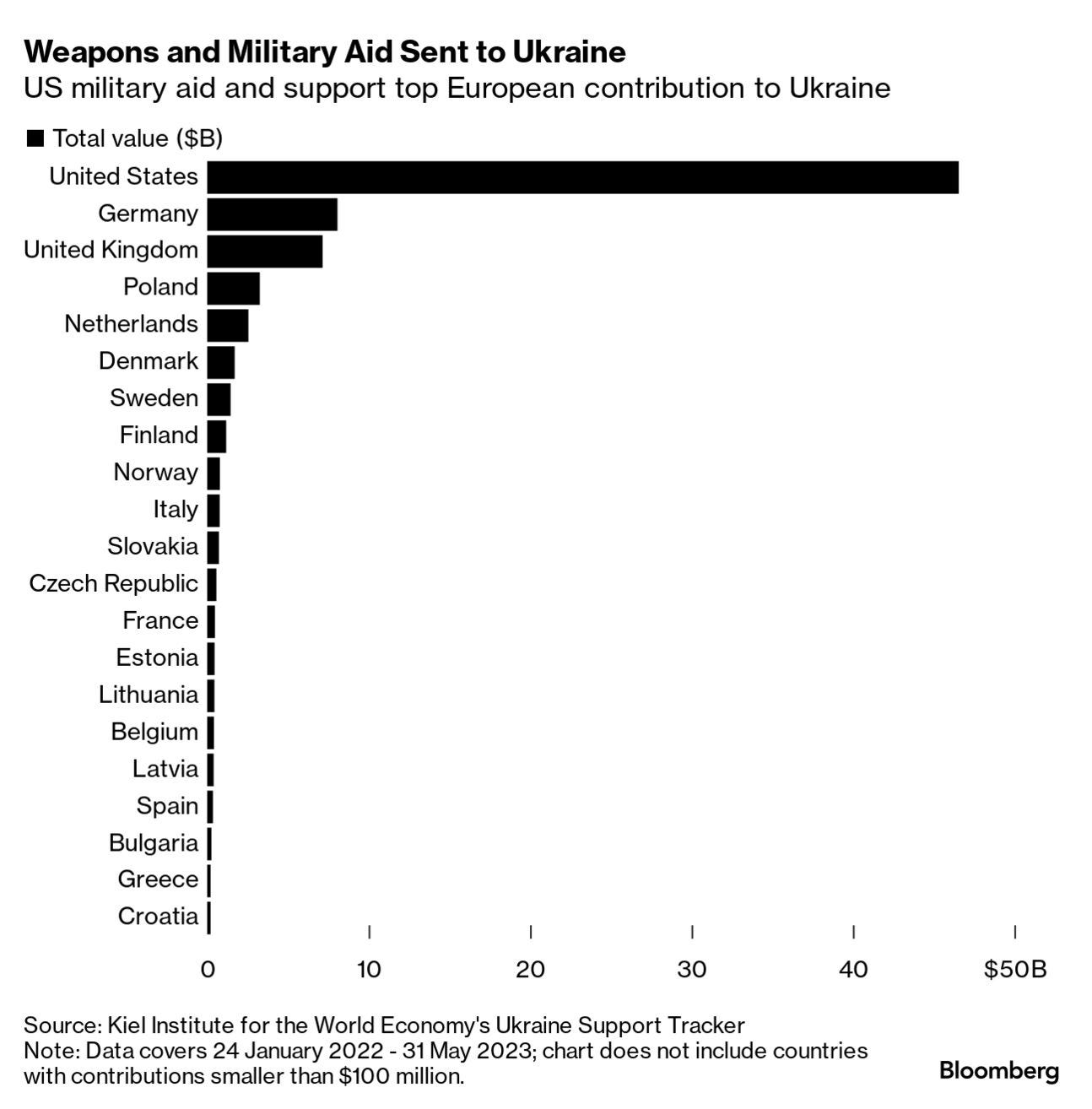Ukrainization
If the US cannot end the war in Ukraine quickly, it should transfer responsibility for support to Europe
In the 1960s the US was engaged in a global Cold War with the Soviet Union. The US strategy was “containment”, which meant stopping the spread of Communism even if that meant fighting proxy wars. The Administration of LBJ dramatically escalated one such proxy war in Vietnam in the mid-1960s. LBJ didn’t run for reelection in 1968 (the war was unpopular) and Vietnam was a central issue in the campaign. Richard Nixon narrowly won the Presidency by promising peace with honor, ending the war but not in a way that would cause the South Vietnamese to immediately collapse. The war went on for several more years as they pursued a policy of “Vietnamization”, or transferring responsibility for the war to the South Vietnamese.
In 2023, the US is engaged in another proxy war against Russia, the successor to the Soviet Union, in Ukraine. This time there are no US troops involved, though there are plenty of Ukrainians and Russians. The best course of action would be immediate peace, as we’ve written about before. But if Russia and Ukraine won’t come to terms then the US should transfer responsibility for the war to Europe.
State of the battlefield
The war seems to be locked in a bloody stalemate with no end in sight. Western media hyped the Ukrainian counteroffensive of summer 2023 fueled by NATO equipment and money, but that effort seems to have failed. John Mearsheimer, esteemed professor from the University of Chicago and an Iraq War critic, argues persuasively that the conflict has reached a stalemate. Two major factors favor the Russians while one major factor favors the Ukrainians, leading to a stalemate. The Russians have an artillery and population advantage, while the Ukrainians are on the defensive fighting for their homeland.
Financial burden
The US has provided far more aid to Ukraine than the rest of Europe combined.
Figure 1: Aid to Ukraine by country
At this rate, the US is spending about as much on the war in Ukraine per year as in the 20-year war in Afghanistan (approximately $92b/y in Ukraine vs $100b/y in Afghanistan). This despite the fact that the US and European economy are roughly the same size ($23t vs. $22t, respectively).
Furthermore, the majority of European countries are spending below the 2% of GDP threshold on defense required by the terms of the NATO alliance, despite the war in Ukraine threatening Europe and not the US.
Figure 2: NATO defense spending
Critics of US support for the war argue that US military aid to Ukraine comes in lieu of social spending at home and at a time when federal budget deficits are forecast to dramatically increase in the coming years.
Figure 3: CBO forecast of US debt
Transferring the burden
The best way to transfer support for the war without leaving Ukraine in a lurch is for the US to give a deadline for support, let’s say 2026, so that Europe can step in to take over support for the war. This would allow the US to focus entirely on China and their military buildup in the Pacific.
During the campaign in 1968, Nixon claimed to have a “secret plan” to end the war in Vietnam. Despite this claim, the war went on for several more years after Nixon’s election. In 2023 Donald Trump, the leading Republican presidential candidate, claims to have a plan to end the war in Ukraine within 24 hours if elected. That may be true but if his, or another candidates, negotiations fail then “Ukrainization” offers a plan for the US to extract itself from the war in Ukraine.








